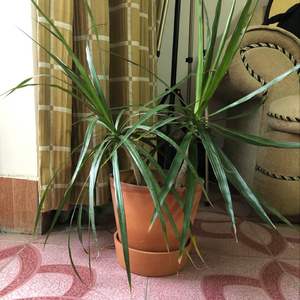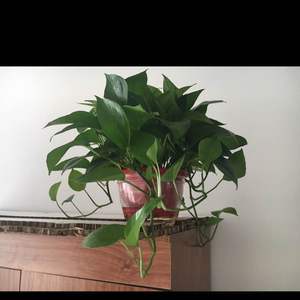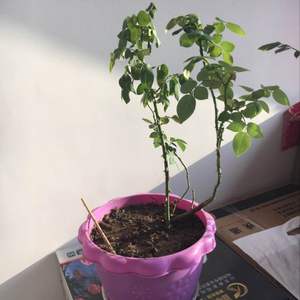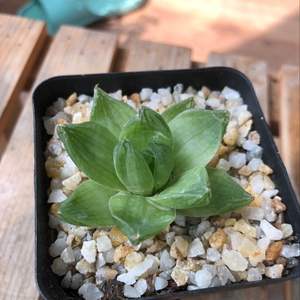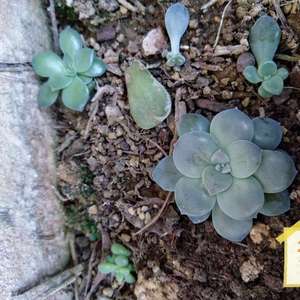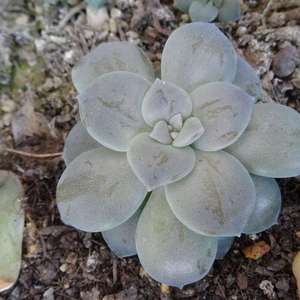文章
Miss Chen
2018年08月01日

Description: This plant is a summer annual forming a mat of branching leafy stems up to 2' across. The stems are light green, pale red, or nearly white; they are terete, hairy, and slightly succulent. The stems are slightly swollen where the stipules of the leaves occur. Pairs of opposite leaves occur at intervals along the stems. Individual leaf blades are 3-11 mm. long and 2-6 mm. across; they are broadly oblong or ovate-oblong in shape and finely toothed along the upper margins. Leaf venation is palmate, although only the central veins are conspicuous. The upper blade surface is dull medium green and hairless to slightly hairy, while the lower surface is pale green to white and hairy. The tips of leaf blades are well-rounded, while their bases are rounded to slightly cordate and often asymmetric. Sometimes the margins of the leaf blades are tinted red. The short petioles are light green to nearly white and usually hairy.
Small clusters of 1-4 inflorescences develop from the axils of each pair of leaves. Each inflorescence is about 2 mm. across, consisting of a cup-like cyathium on a short stalk that contains a single pistillate flower on a short stalk and 4 staminate flowers. Each cyathium is light green and glabrous to slightly hairy; there are 4 red nectar glands with whitish petaloid appendages along the upper rim of each cyathium. The pistillate flower consists of a 3-lobed ovary with a divided style at its apex; the ovary is light green (while immature), ovoid-globoid in shape, and its lobes have spreading hairs. The stalk of the pistillate flower curves sideways or downward initially, but it later becomes erect at maturity. A staminate flower within the inflorescence consists of a single stamen. The blooming period occurs from mid-summer into fall for about 2 months. At maturity, the ovaries develop into 3-celled seed capsules; each cell of a capsule contains a single seed. The seeds are distributed, in part, by mechanical ejection. Individual seeds are about 1.0 mm. in length, oblongoid-rectangular in shape, and transversely ridged. The root system consists of a slender taproot that branches. The foliage of this plant contains a milky latex.
Cultivation: The preference is full to partial sun, dry-mesic to dry conditions, and barren soil containing sand, gravel, or clay. However, Green Creeping Spurge also adapts to soil containing fertile loam if disturbance removes taller ground vegetation. Because of its C4-metabolism and slightly succulent nature, this plant can withstand hot dry conditions.

Range & Habitat: Green Creeping Spurge is a rare plant in Illinois, where it has been accidentally introduced. It has been observed in NE Illinois and more recently in Champaign County (see Distribution Map). These records may underestimate its distribution within the state, however. Green Creeping Spurge is native to tropical America. Habitats include lawns, gardens, areas along railroads and roadsides, areas near parking lots, cracks of urban sidewalks, and barren waste places. Open sunny areas with a history of disturbance are preferred.
Faunal Associations: The nectaries of the flowers attract Syrphid flies, Halictid bees, and various ants (Lasius, Formica, & Forelius spp.). Some bees may also collect pollen. Two aphids suck juices from Chamaesyce spp. (Low Spurges): Macrosiphum euphorbiae and Macrosiphum gei. Other insect feeders include the plant bug, Semium hirtum, and the flea beetle, Glyptina leptosoma. The latter insect feeds on the roots. Because of the toxic white latex and its low stature, mammalian herbivores have little use for Green Creeping Spurge and other Chamaesyce spp. However, the following birds eat the seeds of these plants: Greater Prairie Chicken, Bobwhite, Mourning Dove, Horned Lark, and Chipping Sparrow (Martin et al., 1951/1961). Because of an oily food appendage on each seed (referred to as a 'caruncle'), ants probably play a role in distributing the seeds to new areas.
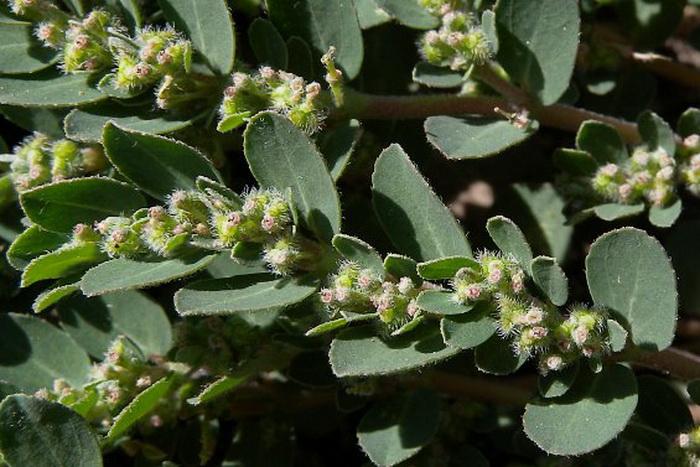
Photographic Location: Along a parking lot and a railroad in Urbana, Illinois.
Comments: Green Creeping Spurge is a relatively recent invader of Illinois. Because of its low habit and similarity to other Chamaesyce spp. (Low Spurges), this invasion has gone largely unnoticed. At a cursory glance, Green Creeping Spurge resembles a common native species, Prostrate Spurge (Chamaesyce maculata, formerly Chamaesyce supina), and the two species can be found together in the same habitats, particularly in some urban areas. The latter species differs from Green Creeping Spurge as follows: 1) its leaves are about 3 times as long as they are across, rather than 2 times as long as they are across, 2) its leaves often have a patch of dark red in their centers, 3) the lobes of its ovaries/capsules have appressed hairs, rather than spreading hairs, and 4) its mature seed capsules are often found below the leaves on curved stalks, rather than above the leaves on erect stalks. Scientific synonyms of Green Creeping Spurge include Euphorbia prostrata and Euphorbia chamaesyce. Another common name of this species is Prostrate Sandmat.
Small clusters of 1-4 inflorescences develop from the axils of each pair of leaves. Each inflorescence is about 2 mm. across, consisting of a cup-like cyathium on a short stalk that contains a single pistillate flower on a short stalk and 4 staminate flowers. Each cyathium is light green and glabrous to slightly hairy; there are 4 red nectar glands with whitish petaloid appendages along the upper rim of each cyathium. The pistillate flower consists of a 3-lobed ovary with a divided style at its apex; the ovary is light green (while immature), ovoid-globoid in shape, and its lobes have spreading hairs. The stalk of the pistillate flower curves sideways or downward initially, but it later becomes erect at maturity. A staminate flower within the inflorescence consists of a single stamen. The blooming period occurs from mid-summer into fall for about 2 months. At maturity, the ovaries develop into 3-celled seed capsules; each cell of a capsule contains a single seed. The seeds are distributed, in part, by mechanical ejection. Individual seeds are about 1.0 mm. in length, oblongoid-rectangular in shape, and transversely ridged. The root system consists of a slender taproot that branches. The foliage of this plant contains a milky latex.
Cultivation: The preference is full to partial sun, dry-mesic to dry conditions, and barren soil containing sand, gravel, or clay. However, Green Creeping Spurge also adapts to soil containing fertile loam if disturbance removes taller ground vegetation. Because of its C4-metabolism and slightly succulent nature, this plant can withstand hot dry conditions.

Range & Habitat: Green Creeping Spurge is a rare plant in Illinois, where it has been accidentally introduced. It has been observed in NE Illinois and more recently in Champaign County (see Distribution Map). These records may underestimate its distribution within the state, however. Green Creeping Spurge is native to tropical America. Habitats include lawns, gardens, areas along railroads and roadsides, areas near parking lots, cracks of urban sidewalks, and barren waste places. Open sunny areas with a history of disturbance are preferred.
Faunal Associations: The nectaries of the flowers attract Syrphid flies, Halictid bees, and various ants (Lasius, Formica, & Forelius spp.). Some bees may also collect pollen. Two aphids suck juices from Chamaesyce spp. (Low Spurges): Macrosiphum euphorbiae and Macrosiphum gei. Other insect feeders include the plant bug, Semium hirtum, and the flea beetle, Glyptina leptosoma. The latter insect feeds on the roots. Because of the toxic white latex and its low stature, mammalian herbivores have little use for Green Creeping Spurge and other Chamaesyce spp. However, the following birds eat the seeds of these plants: Greater Prairie Chicken, Bobwhite, Mourning Dove, Horned Lark, and Chipping Sparrow (Martin et al., 1951/1961). Because of an oily food appendage on each seed (referred to as a 'caruncle'), ants probably play a role in distributing the seeds to new areas.

Photographic Location: Along a parking lot and a railroad in Urbana, Illinois.
Comments: Green Creeping Spurge is a relatively recent invader of Illinois. Because of its low habit and similarity to other Chamaesyce spp. (Low Spurges), this invasion has gone largely unnoticed. At a cursory glance, Green Creeping Spurge resembles a common native species, Prostrate Spurge (Chamaesyce maculata, formerly Chamaesyce supina), and the two species can be found together in the same habitats, particularly in some urban areas. The latter species differs from Green Creeping Spurge as follows: 1) its leaves are about 3 times as long as they are across, rather than 2 times as long as they are across, 2) its leaves often have a patch of dark red in their centers, 3) the lobes of its ovaries/capsules have appressed hairs, rather than spreading hairs, and 4) its mature seed capsules are often found below the leaves on curved stalks, rather than above the leaves on erect stalks. Scientific synonyms of Green Creeping Spurge include Euphorbia prostrata and Euphorbia chamaesyce. Another common name of this species is Prostrate Sandmat.
0
0
文章
Miss Chen
2018年08月01日

Description: This plant is a summer annual that becomes 3-18" tall; it is low and spreading, but not prostrate. The stems are pinkish red, round, and hairless, except for a few fine hairs on new growth. The opposite leaves are up to 2" long and ¾" across. They are oblong, with short petioles and margins that are smooth or irregularly serrate. The lower surface of each leaf is light green, while the upper surface may have a red blotch in the middle. A few fine hairs may occur near the base of eachStems, Leaves, & Flowers leaf. The inflorescence consists of a small cyathium on a straight pedicel. Usually, several cyathia develop near the ends of each major stem when a plant is mature. A cyathium is a small cup-like structure containing the pistillate flower and one or more staminate flowers, which have neither true petals nor sepals. It is initially green, but often turns red in bright sunlight. On this particular species, the cyathium has 4 tiny petal-like appendages that are bright white. Eventually, a round tripartite fruit develops from the cyathium on a short stalk; it often turns red in bright sunlight as well. This fruit is noticeably larger than the flowers. The blooming period is mid-summer to fall, lasting about 1-2 months. There is no noticeable floral scent. The root system consists of a slender central taproot.
Cultivation: The preference is full sunlight, dry conditions, and poor soil. The soil can contain significant amounts of gravel, sand, or clay. Foliar disease rarely bothers the leaves, and drought resistance is excellent. This plant can reseed itself readily in sunny open areas.
Range & Habitat: The native Nodding Spurge is a common plant that occurs in nearly every county of Illinois (see Distribution Map). Habitats include dry upland areas of prairies, clay prairies, gravel prairies, thickets, openings in upland woodlands, fields and pastures (whether abandoned or still in use), areas along roadsides and railroads, poorly maintained lawns and gardens, and miscellaneous waste areas. This plant prefers disturbed open areas and it is somewhat weedy. This plant seems to be more common in rural than urban areas, possibly because of its intolerance to herbicides and frequent mowing of lawns.
Faunal Associations: The tiny flowers occasionally attract small bees, Syrphid flies, and wasps. These insects seek nectar primarily. The seeds are consumed by the Mourning Dove and Greater Prairie Chicken, and to a lesser extent by the Bobwhite and Horned Lark. The Wild Turkey has been known to eat the foliage, developing buds, and fruits, apparently without ill effects. Mammalian herbivores rarely eat this plant because of the poisonous white latex in the stems and foliage.
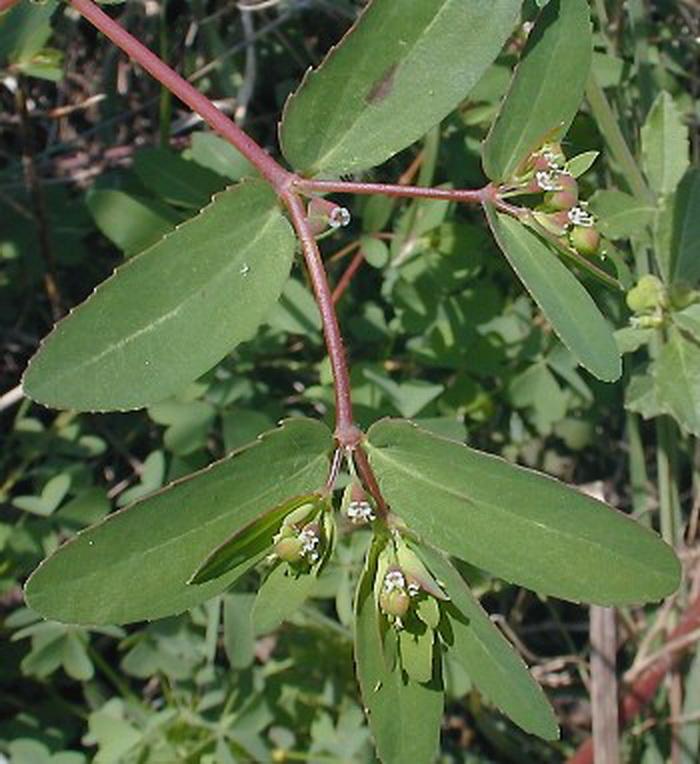
Photographic Location: The photographs were taken at the Windsor Road Prairie in Champaign, Illinois. Some flowers are in bloom in one of the photographs as their stamens are clearly visible.
Comments: The Nodding Spurge can be readily distinguished from other Chamaesyce spp. by its more erect habit, larger leaves, and mostly hairless stems. Several scientific names have been applied to the Nodding Spurge in the past, including Chamaesyce maculata, Euphorbia maculata, and Euphorbia preslii. Sometimes the entire plant will turn reddish green in response to strong sunlight and dry conditions.
Cultivation: The preference is full sunlight, dry conditions, and poor soil. The soil can contain significant amounts of gravel, sand, or clay. Foliar disease rarely bothers the leaves, and drought resistance is excellent. This plant can reseed itself readily in sunny open areas.
Range & Habitat: The native Nodding Spurge is a common plant that occurs in nearly every county of Illinois (see Distribution Map). Habitats include dry upland areas of prairies, clay prairies, gravel prairies, thickets, openings in upland woodlands, fields and pastures (whether abandoned or still in use), areas along roadsides and railroads, poorly maintained lawns and gardens, and miscellaneous waste areas. This plant prefers disturbed open areas and it is somewhat weedy. This plant seems to be more common in rural than urban areas, possibly because of its intolerance to herbicides and frequent mowing of lawns.
Faunal Associations: The tiny flowers occasionally attract small bees, Syrphid flies, and wasps. These insects seek nectar primarily. The seeds are consumed by the Mourning Dove and Greater Prairie Chicken, and to a lesser extent by the Bobwhite and Horned Lark. The Wild Turkey has been known to eat the foliage, developing buds, and fruits, apparently without ill effects. Mammalian herbivores rarely eat this plant because of the poisonous white latex in the stems and foliage.

Photographic Location: The photographs were taken at the Windsor Road Prairie in Champaign, Illinois. Some flowers are in bloom in one of the photographs as their stamens are clearly visible.
Comments: The Nodding Spurge can be readily distinguished from other Chamaesyce spp. by its more erect habit, larger leaves, and mostly hairless stems. Several scientific names have been applied to the Nodding Spurge in the past, including Chamaesyce maculata, Euphorbia maculata, and Euphorbia preslii. Sometimes the entire plant will turn reddish green in response to strong sunlight and dry conditions.
0
0
文章
Miss Chen
2018年07月31日

Description: This little plant is a winter or spring annual about 2-6" tall. A mature plant becomes tufted at the base, sending up multiple stems. These stems are green and pubescent. The opposite leaves are up to ¾" long and about half as much across. These leaves are broadly oblong or ovate-oblong, green, and pubescent; they have conspicuous central veins, smooth margins, and sessile bases.
The upper stems terminate in small cymes or individual flowers; sometimes the lower cymes branch into secondary cymes of flowers. The peduncles and pedicels of these cymes are light green and pubescent. At the base of each peduncle, there is a pair of green leaf-like bracts. These bracts are broadly lanceolate-oblong or lanceolate-ovate, pubescent, and smooth along the margins; some of the upper bracts have thin translucent margins toward their tips (i.e., they are slightly scarious). These translucent margins are more apparent in mature or dried-out plants than young specimens. The flowers at the tips of the pedicels are up to ¼" across when they are fully open. Each flower has 5 white petals, 5 green sepals, 5 white styles, and 5 stamens with pale yellow anthers. Each petal has several pale lines at its base, while its tip is notched. The sepals are lanceolate and hairy; their margins are translucent. The blooming period occurs during the spring and lasts about 1 month; this is one of the earliest wildflowers to bloom during the spring. The flowers open up during spring days that are sunny and warm. Some plants begin to bloom when they are only 1" tall. Each flower is replaced by a cylindrical capsule containing manyDistribution Map small seeds. Each seed capsule is straight to slightly curved; there are 10 small teeth along its upper rim. The seeds are brown, somewhat flattened, and minutely warty or pebbly. The root system consists mostly of thin fibrous roots. This plant spreads by reseeding itself and it often forms small colonies.
Cultivation: The preference is full sun, moist to slightly dry conditions, and sterile soil with little ground vegetation. In Illinois, this little plant completes its growth cycle during the spring.
Range & Habitat: Small Mouse-Eared Chickweed is occasional in central and NE Illinois, while in other areas of the state it is uncommon or absent. This plant was accidentally introduced into the United States from Europe. Habitats consist of fields, disturbed grassy meadows, areas along roads, barren ground in lawns, and waste areas. Areas with a history of disturbance and environmental degradation are strongly preferred. This little plant tolerates road salt and other run-off chemicals better than most kinds of turf-grass; it also tolerates hardpan clay and gravel better than turf-grass.
Faunal Associations: Like other Chickweeds (Cerastium spp., Stellaria spp.), the flowers of this species attract small bees and Syrphid flies. While the foliage of Small Mouse-Eared Chickweed is potentially edible to rabbits, it is rarely eaten because of its diminutive size and early spring growth. Small granivorous songbirds (e.g., sparrows) may use the seeds as a minor source of food.
Photographic Location: A barren area along a roadside in Urbana, Illinois.
Comments: There are several Cerastium spp. (Mouse-Eared Chickweeds) in Illinois and they are difficult to distinguish from each other. I believe that the species in the photograph above is Cerastium pumilum (Small Mouse-Eared Chickweed) for the following reasons: 1) It is a short-lived annual that completes its life-cycle during the spring, 2) Each of its flowers has 5 stamens and 5 styles, 3) Its flowers always have 5 petals, and 4) Its floral bracts usually lack translucent margins, except for some of the upper bracts on mature plants. Other Mouse-Eared Chickweeds are perennials (e.g., Cerastium fontanum), or they have flowers with 10 stamens (e.g., Cerastium brachypetalum, Cerastium glomeratum), or they produce flowers with 4 petals (e.g., Cerastium diffusum), or all of their bracts have conspicuous translucent margins (e.g., Cerastium semidecandrum).
The upper stems terminate in small cymes or individual flowers; sometimes the lower cymes branch into secondary cymes of flowers. The peduncles and pedicels of these cymes are light green and pubescent. At the base of each peduncle, there is a pair of green leaf-like bracts. These bracts are broadly lanceolate-oblong or lanceolate-ovate, pubescent, and smooth along the margins; some of the upper bracts have thin translucent margins toward their tips (i.e., they are slightly scarious). These translucent margins are more apparent in mature or dried-out plants than young specimens. The flowers at the tips of the pedicels are up to ¼" across when they are fully open. Each flower has 5 white petals, 5 green sepals, 5 white styles, and 5 stamens with pale yellow anthers. Each petal has several pale lines at its base, while its tip is notched. The sepals are lanceolate and hairy; their margins are translucent. The blooming period occurs during the spring and lasts about 1 month; this is one of the earliest wildflowers to bloom during the spring. The flowers open up during spring days that are sunny and warm. Some plants begin to bloom when they are only 1" tall. Each flower is replaced by a cylindrical capsule containing manyDistribution Map small seeds. Each seed capsule is straight to slightly curved; there are 10 small teeth along its upper rim. The seeds are brown, somewhat flattened, and minutely warty or pebbly. The root system consists mostly of thin fibrous roots. This plant spreads by reseeding itself and it often forms small colonies.
Cultivation: The preference is full sun, moist to slightly dry conditions, and sterile soil with little ground vegetation. In Illinois, this little plant completes its growth cycle during the spring.
Range & Habitat: Small Mouse-Eared Chickweed is occasional in central and NE Illinois, while in other areas of the state it is uncommon or absent. This plant was accidentally introduced into the United States from Europe. Habitats consist of fields, disturbed grassy meadows, areas along roads, barren ground in lawns, and waste areas. Areas with a history of disturbance and environmental degradation are strongly preferred. This little plant tolerates road salt and other run-off chemicals better than most kinds of turf-grass; it also tolerates hardpan clay and gravel better than turf-grass.
Faunal Associations: Like other Chickweeds (Cerastium spp., Stellaria spp.), the flowers of this species attract small bees and Syrphid flies. While the foliage of Small Mouse-Eared Chickweed is potentially edible to rabbits, it is rarely eaten because of its diminutive size and early spring growth. Small granivorous songbirds (e.g., sparrows) may use the seeds as a minor source of food.
Photographic Location: A barren area along a roadside in Urbana, Illinois.
Comments: There are several Cerastium spp. (Mouse-Eared Chickweeds) in Illinois and they are difficult to distinguish from each other. I believe that the species in the photograph above is Cerastium pumilum (Small Mouse-Eared Chickweed) for the following reasons: 1) It is a short-lived annual that completes its life-cycle during the spring, 2) Each of its flowers has 5 stamens and 5 styles, 3) Its flowers always have 5 petals, and 4) Its floral bracts usually lack translucent margins, except for some of the upper bracts on mature plants. Other Mouse-Eared Chickweeds are perennials (e.g., Cerastium fontanum), or they have flowers with 10 stamens (e.g., Cerastium brachypetalum, Cerastium glomeratum), or they produce flowers with 4 petals (e.g., Cerastium diffusum), or all of their bracts have conspicuous translucent margins (e.g., Cerastium semidecandrum).
0
0
求助
jordi
2018年07月26日

ID Help Please !! I have this plant and have had it for 2-3 years. The third pic is the plant as a baby. This big boy got so tall and is now over 1 and a half feet (not even straightened, I measured it while it was in its natural position) It was about 6 inches when I first got it. Some sticks are in the soil to help hold the limbs up, they are not part of the plant. Thanks !

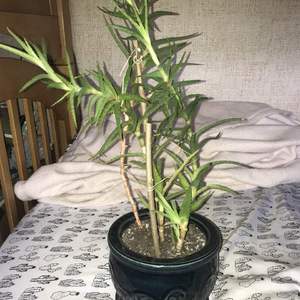
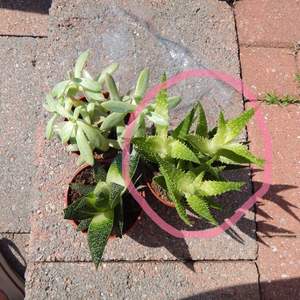
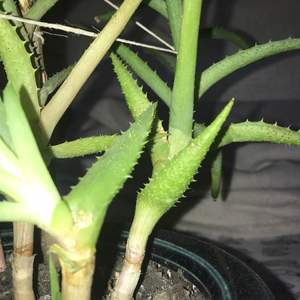




0
0
初心~:你这个长成了恨天高
jordi:@Shanee I think it wouldn’t be a candelabra since I’ve had it for a long time and it hasn’t flowered. It is gooey inside so it’s possible though. Thanks so much !
Shanee:Possible candelabra aloe. Or aloe Vera that’s needing more light.
文章
Miss Chen
2018年07月26日

Description: This plant is usually a winter annual, although sometimes it is a summer annual. It consists of a rosette of basal leaves up to 9" across, from which one or more flowering stalks develop that are little branched and up to 2½' tall (although individual plants can be much smaller than this). The basal leaves are up to 4½" long and ¾" across; they are elliptic, lanceolate, or oblanceolate, and pinnately lobed. The alternate leaves on the flowering stalks are much smaller in size and widely spaced; they are lanceolate, elliptic or linear in shape, and either smooth or slightly dentate along their margins. The bases of the alternate leaves are either sessile or they clasp their stalks with auriculate (ear-like) lobes. Both the basal and alternate leaves are medium to dark green and mostly hairless, although the lower sides of their central veins are often covered with appressed hairs. The terete stalks are light green to dark reddish purple (usually the latter), and they are usually glabrous above and appressed-hairy below.
Each stalk terminates in a raceme of small flowers. These flowers bloom only toward the tip of the raceme and they are short-lived. Each flower is a little less than 1/8" (3 mm.) across and consists of 4 white petals, 4 greenish sepals, a pistil with a single style, and several stamens. Plants that are winter annuals bloom during spring to mid-summer, while summer annuals bloom from mid-summer to fall. The flowers are replaced by seedpods that are obcordoid, somewhat compressed (flattened), and a little less than ¼" long. Each seedpod is divided into 2 cells and contains about 20 seeds. The slender pedicels of the seedpods are about ½-¾" long and ascending. The raceme elongates with maturity and can become up to 1½' long on large plants. The small seeds are yellowish to reddish brown, ovoid-oblongoid in shape, and shiny; they can remain viable in the ground for several years. The root system consists of a taproot. This plant spreads by reseeding itself.

Cultivation: Shepherd's Purse is typically found in full sun, mesic to dry conditions, and almost any kind of soil, including cracks in pavement. The size of this plant varies considerably with the fertility of the soil and availability of moisture. It is somewhat aggressive in reseeding itself.
Range & Habitat: Shepherd's Purse is a common plant that occurs in every county of Illinois (see Distribution Map). It was introduced into North America from Europe. Habitats include fields and pastures, areas along railroads and roadsides, gardens and lawns, construction sites, vacant lots, dirt paths, and waste ground. These habitats can be either sandy or non-sandy. Shepherd's Purse is found in highly disturbed areas, often where the soil surface has been exposed.

Faunal Associations: The nectar and pollen of the flowers attract mostly short-tongued bees and flies, including honeybees, Halictid bees, Andrenid bees, Syrphid flies, Tachinid flies, flesh flies (Sarcophagidae), and blow flies (Lucilia spp.). Less often, small butterflies and skippers suck nectar from the flowers (Robertson, 1929). The caterpillars of two butterflies, Anthocharis midea (Falcate Orangetip) and Pontia protodice (Checkered White), feed on Shepherd's Purse (Opler & Krizek, 1984). Other insect feeders include Entomoscelis americana (Red Turnip Beetle), several flea beetle species (Phyllotreta spp.), larvae of Liriomyza trifolii (American Serpentine Leafminer Fly), Holcostethus limbolarius (a stink bug), Myzus cerasi (Black Cherry Aphid), Lipaphis pseudobrassicae (False Cabbage Aphid), and Ceutorhynchus erysimi (a weevil); see Clark et al. (2004), Spencer & Steyskal (1986), Rider (2009), Blackman & Eastop (2013), and Majka et al. (2007). Information about this plant's relationships with vertebrate animals is more limited. White-tailed Deer browse on the leaves and flowering stalks: because the seeds of Shepherd's Purse can pass through the digestive tract of this animal and remain viable, they are spread to new areas (Myers et al., 2004). The Eastern Goldfinch sometimes eats the seeds, while the Prairie Vole (Microtus ochrogaster) feeds on the leaves of this plant to a limited extent (Martin et al., 1951/1961; Cook et al., 2004).

Photographic Location: A garden bed of an abandoned hotel in Urbana, Illinois, and an area along a bike path on the campus of the University of Illinois in the same city.
Comments: Shepherd's Purse is an easy plant to identify among members of the Mustard family because of the distinctive shape of its seedpods. This shape apparently resembles the leather purse of shepherds during the Middle Ages. The hairiness of the flowering stalks and the shape of the leaves is rather variable across different populations of plants. Sometimes the basal leaves are deeply lobed, while on other occasions they are shallowly lobed.
Each stalk terminates in a raceme of small flowers. These flowers bloom only toward the tip of the raceme and they are short-lived. Each flower is a little less than 1/8" (3 mm.) across and consists of 4 white petals, 4 greenish sepals, a pistil with a single style, and several stamens. Plants that are winter annuals bloom during spring to mid-summer, while summer annuals bloom from mid-summer to fall. The flowers are replaced by seedpods that are obcordoid, somewhat compressed (flattened), and a little less than ¼" long. Each seedpod is divided into 2 cells and contains about 20 seeds. The slender pedicels of the seedpods are about ½-¾" long and ascending. The raceme elongates with maturity and can become up to 1½' long on large plants. The small seeds are yellowish to reddish brown, ovoid-oblongoid in shape, and shiny; they can remain viable in the ground for several years. The root system consists of a taproot. This plant spreads by reseeding itself.

Cultivation: Shepherd's Purse is typically found in full sun, mesic to dry conditions, and almost any kind of soil, including cracks in pavement. The size of this plant varies considerably with the fertility of the soil and availability of moisture. It is somewhat aggressive in reseeding itself.
Range & Habitat: Shepherd's Purse is a common plant that occurs in every county of Illinois (see Distribution Map). It was introduced into North America from Europe. Habitats include fields and pastures, areas along railroads and roadsides, gardens and lawns, construction sites, vacant lots, dirt paths, and waste ground. These habitats can be either sandy or non-sandy. Shepherd's Purse is found in highly disturbed areas, often where the soil surface has been exposed.

Faunal Associations: The nectar and pollen of the flowers attract mostly short-tongued bees and flies, including honeybees, Halictid bees, Andrenid bees, Syrphid flies, Tachinid flies, flesh flies (Sarcophagidae), and blow flies (Lucilia spp.). Less often, small butterflies and skippers suck nectar from the flowers (Robertson, 1929). The caterpillars of two butterflies, Anthocharis midea (Falcate Orangetip) and Pontia protodice (Checkered White), feed on Shepherd's Purse (Opler & Krizek, 1984). Other insect feeders include Entomoscelis americana (Red Turnip Beetle), several flea beetle species (Phyllotreta spp.), larvae of Liriomyza trifolii (American Serpentine Leafminer Fly), Holcostethus limbolarius (a stink bug), Myzus cerasi (Black Cherry Aphid), Lipaphis pseudobrassicae (False Cabbage Aphid), and Ceutorhynchus erysimi (a weevil); see Clark et al. (2004), Spencer & Steyskal (1986), Rider (2009), Blackman & Eastop (2013), and Majka et al. (2007). Information about this plant's relationships with vertebrate animals is more limited. White-tailed Deer browse on the leaves and flowering stalks: because the seeds of Shepherd's Purse can pass through the digestive tract of this animal and remain viable, they are spread to new areas (Myers et al., 2004). The Eastern Goldfinch sometimes eats the seeds, while the Prairie Vole (Microtus ochrogaster) feeds on the leaves of this plant to a limited extent (Martin et al., 1951/1961; Cook et al., 2004).

Photographic Location: A garden bed of an abandoned hotel in Urbana, Illinois, and an area along a bike path on the campus of the University of Illinois in the same city.
Comments: Shepherd's Purse is an easy plant to identify among members of the Mustard family because of the distinctive shape of its seedpods. This shape apparently resembles the leather purse of shepherds during the Middle Ages. The hairiness of the flowering stalks and the shape of the leaves is rather variable across different populations of plants. Sometimes the basal leaves are deeply lobed, while on other occasions they are shallowly lobed.
0
0
文章
Miss Chen
2018年07月26日

Description: This herbaceous perennial plant is 1½–3' tall and little branched. The central stem is light green to reddish brown, glabrous to slightly hairy, and terete or angular. The alternate leaves are up to 5" long, 2" across, and variable in shape; the lowest leaves are often cordate-oval, while the middle and upper leaves are ovate-lanceolate to lanceolate. All of these leaves have crenate or serrated margins; their upper surfaces are medium to dark green, while their lower surfaces are light green and short-hairy along the veins. The lower and middle leaves have slender petioles, while the upper leaves are more likely to be sessile. Sometimes short leafy stalks develop from the axils of the leaves on the central stem.
The central stem terminates in an elongated raceme of flowers up to 1' long. The flowers tend to nod downward along one side of the raceme on short pedicels. At the base of each pedicel, there is a small leafy bract that is linear-lanceolate in shape. Sometimes nodding flowers are produced from the axils of the upper leaves on longer pedicels. Each flower has a bell-shaped blue-violet corolla, 5 green sepals, 5 stamens, and an exerted style with 3 curled stigmas. The corolla is 1–1½" long and half as much across; it has 5 pointed lobes that are recurved. The sepals are linear-lanceolate in shape, widely spreading to recurved, and much smaller in size than the corolla. The style is white or pale purple. The blooming period occurs from mid-summer to early fall and lasts about a month. Each flower is replaced by a globoid seed capsule that contains several small seeds. The root system is rhizomatous. Occasionally, small colonies of plants are produced from the long rhizomes.
Cultivation: The preference is full to partial sun, more or less mesic conditions, and a fertile loamy soil.

Range & Habitat: Creeping Bellflower naturalizes occasionally in northern Illinois and uncommonly in central Illinois; it is apparently rare or absent in southern Illinois (see Distribution Map). This species was introduced into North America from Europe as an ornamental plant. Habitats include open woodlands, savannas, thickets, fence rows, edges of yards, roadsides, and waste areas. Creeping Bellflower is often cultivated in gardens because of its showy flowers.
Faunal Associations: According to Müller (1873/1883), the flowers of Creeping Bellflower produce both nectar and pollen. Müller observed honeybees, bumblebees, Halictid bees, and other bees visiting the flowers for nectar or pollen in Germany; he also observed a Syrphid fly with a long proboscis (Rhingia sp.) sucking nectar from the flowers. Aside from these observations, further information about floral-faunal relationships for this species are unavailable.

Photographic Location: The photographs were taken at a flower garden in Urbana, Illinois.
Comments: Creeping Bellflower has very showy flowers. Among the Eurasian bellflowers that are cultivated, this is the species that most often escapes — in part because it is more commonly cultivated. A species that has naturalized less often in Illinois, Campanula glomerata (Clustered Bellflower), has more erect flowers that are clustered together at the apex each central stem. The flowers of this species have sepals that are longer and wider than those of Creeping Bellflower. The circumboreal Campanula rotundifolia (Harebells) and native Campanulastrum americanum (American Bellflower) are quite distinct from Creeping Bellflower. Harebells has linear leaves along its stems and its bell-shaped flowers are smaller in size (usually less than 1" in length) than those of creeping Bellflower. The flowers of American Bellflower have shallow corollas that are star-shaped with widely spreading lobes; the older scientific name of this latter species is Campanula americana.
The central stem terminates in an elongated raceme of flowers up to 1' long. The flowers tend to nod downward along one side of the raceme on short pedicels. At the base of each pedicel, there is a small leafy bract that is linear-lanceolate in shape. Sometimes nodding flowers are produced from the axils of the upper leaves on longer pedicels. Each flower has a bell-shaped blue-violet corolla, 5 green sepals, 5 stamens, and an exerted style with 3 curled stigmas. The corolla is 1–1½" long and half as much across; it has 5 pointed lobes that are recurved. The sepals are linear-lanceolate in shape, widely spreading to recurved, and much smaller in size than the corolla. The style is white or pale purple. The blooming period occurs from mid-summer to early fall and lasts about a month. Each flower is replaced by a globoid seed capsule that contains several small seeds. The root system is rhizomatous. Occasionally, small colonies of plants are produced from the long rhizomes.
Cultivation: The preference is full to partial sun, more or less mesic conditions, and a fertile loamy soil.

Range & Habitat: Creeping Bellflower naturalizes occasionally in northern Illinois and uncommonly in central Illinois; it is apparently rare or absent in southern Illinois (see Distribution Map). This species was introduced into North America from Europe as an ornamental plant. Habitats include open woodlands, savannas, thickets, fence rows, edges of yards, roadsides, and waste areas. Creeping Bellflower is often cultivated in gardens because of its showy flowers.
Faunal Associations: According to Müller (1873/1883), the flowers of Creeping Bellflower produce both nectar and pollen. Müller observed honeybees, bumblebees, Halictid bees, and other bees visiting the flowers for nectar or pollen in Germany; he also observed a Syrphid fly with a long proboscis (Rhingia sp.) sucking nectar from the flowers. Aside from these observations, further information about floral-faunal relationships for this species are unavailable.

Photographic Location: The photographs were taken at a flower garden in Urbana, Illinois.
Comments: Creeping Bellflower has very showy flowers. Among the Eurasian bellflowers that are cultivated, this is the species that most often escapes — in part because it is more commonly cultivated. A species that has naturalized less often in Illinois, Campanula glomerata (Clustered Bellflower), has more erect flowers that are clustered together at the apex each central stem. The flowers of this species have sepals that are longer and wider than those of Creeping Bellflower. The circumboreal Campanula rotundifolia (Harebells) and native Campanulastrum americanum (American Bellflower) are quite distinct from Creeping Bellflower. Harebells has linear leaves along its stems and its bell-shaped flowers are smaller in size (usually less than 1" in length) than those of creeping Bellflower. The flowers of American Bellflower have shallow corollas that are star-shaped with widely spreading lobes; the older scientific name of this latter species is Campanula americana.
0
0
文章
Miss Chen
2018年07月26日

Description: This plant is a winter annual or biennial that becomes ½–2' tall, branching very little except at the base. The round stems are more or less hairy. The alternate leaves are up to 1½" long and ¼" across. They are oblanceolate, lanceolate-oblong, or oblong-linear, and sessile at the base. The upper surface of each leaf has a single central vein, but radiating side veins are not visible. The leaves are more or less pubescent, although they occasionally have longer white hairs. Their margins are smooth and ciliate.
The nearly sessile flowers develop from the axils of the leaves in the upper portion of the stems. They are bunched together while in bloom or at the bud stage, but become more separated from each other as the flowering stems continue to elongate. Each flower is about ¼" long, consisting of a tubular white corolla with 5 small lobes and a hairy green calyx with 5 teeth that are linear-lanceolate. These teeth are about as long as the corolla. There are 5 stamens and a pistil that are inserted within the narrow throat of the corolla. The blooming period can occur from mid-spring to mid-summer and lasts about 2 months. Each flower is replaced by 4 nutlets. A nutlet is truncate at the base and tapers to a blunt round tip at the top. It is broadest a little below the middle, and has a greyish brown surface that is rough and wrinkled. The root system consists of a taproot. This plant spreads by reseeding itself.
Cultivation: This adaptable plant can be found in full or partial sun and mesic conditions in fertile loam, clay-loam, or sandy soil. Open areas are preferred where there is a scarcity of taller plants.
Close-up of FlowersRange & Habitat: Corn Gromwell is occasional to locally common in most areas of Illinois, except in the NW and SE, where it is uncommon or absent (see Distribution Map). It is adventive in North America and native to Eurasia. Habitats include cropland consisting of winter wheat or rye, fallow fields, vacant lots, grassy areas along roadsides and railroads, and miscellaneous waste areas. This weed occurs primarily in fields or along railroads, but it also appears in run-down areas of cities. Corn Gromwell prefers disturbed areas, and doesn't invade high quality natural sites to any significant degree.

Faunal Associations: Little information is available about floral-faunal relations for this species. According to Muller of 19th century Germany, the flowers of Corn Gromwell have few insect visitors. Occasionally, they attracted White butterflies, bees, and Syrphid flies.
Photographic Location: A grassy vacant lot in Urbana, Illinois.
Comments: This is a rather inconspicuous plant even while it is blooming. Corn Gromwell resembles many other weeds with small white flowers, but it has a distinguishing characteristic that sets it apart: The teeth of the hairy calyx are unusually long, slender, and conspicuous – about the same length as the flowers. Long after the corolla of a flower has withered away, the teeth of the calyx surround the nutlets on all sides and are much taller than them. Corn Gromwell resembles other members of the Borage family to some extent, including the native Lithospermum latifolium (American Gromwell) and introduced Lithospermum officinale (European Gromwell). However, these latter species have wider leaves with conspicuous side veins. Corn Gromwell is easily distinguished from the many weedy members of the Mustard family because its tubular flowers have 5 petal-like lobes, while the flowers of the latter have only 4 petals. An obsolete scientific name for this plant is Lithospermum arvense.
The nearly sessile flowers develop from the axils of the leaves in the upper portion of the stems. They are bunched together while in bloom or at the bud stage, but become more separated from each other as the flowering stems continue to elongate. Each flower is about ¼" long, consisting of a tubular white corolla with 5 small lobes and a hairy green calyx with 5 teeth that are linear-lanceolate. These teeth are about as long as the corolla. There are 5 stamens and a pistil that are inserted within the narrow throat of the corolla. The blooming period can occur from mid-spring to mid-summer and lasts about 2 months. Each flower is replaced by 4 nutlets. A nutlet is truncate at the base and tapers to a blunt round tip at the top. It is broadest a little below the middle, and has a greyish brown surface that is rough and wrinkled. The root system consists of a taproot. This plant spreads by reseeding itself.
Cultivation: This adaptable plant can be found in full or partial sun and mesic conditions in fertile loam, clay-loam, or sandy soil. Open areas are preferred where there is a scarcity of taller plants.
Close-up of FlowersRange & Habitat: Corn Gromwell is occasional to locally common in most areas of Illinois, except in the NW and SE, where it is uncommon or absent (see Distribution Map). It is adventive in North America and native to Eurasia. Habitats include cropland consisting of winter wheat or rye, fallow fields, vacant lots, grassy areas along roadsides and railroads, and miscellaneous waste areas. This weed occurs primarily in fields or along railroads, but it also appears in run-down areas of cities. Corn Gromwell prefers disturbed areas, and doesn't invade high quality natural sites to any significant degree.

Faunal Associations: Little information is available about floral-faunal relations for this species. According to Muller of 19th century Germany, the flowers of Corn Gromwell have few insect visitors. Occasionally, they attracted White butterflies, bees, and Syrphid flies.
Photographic Location: A grassy vacant lot in Urbana, Illinois.
Comments: This is a rather inconspicuous plant even while it is blooming. Corn Gromwell resembles many other weeds with small white flowers, but it has a distinguishing characteristic that sets it apart: The teeth of the hairy calyx are unusually long, slender, and conspicuous – about the same length as the flowers. Long after the corolla of a flower has withered away, the teeth of the calyx surround the nutlets on all sides and are much taller than them. Corn Gromwell resembles other members of the Borage family to some extent, including the native Lithospermum latifolium (American Gromwell) and introduced Lithospermum officinale (European Gromwell). However, these latter species have wider leaves with conspicuous side veins. Corn Gromwell is easily distinguished from the many weedy members of the Mustard family because its tubular flowers have 5 petal-like lobes, while the flowers of the latter have only 4 petals. An obsolete scientific name for this plant is Lithospermum arvense.
0
0




